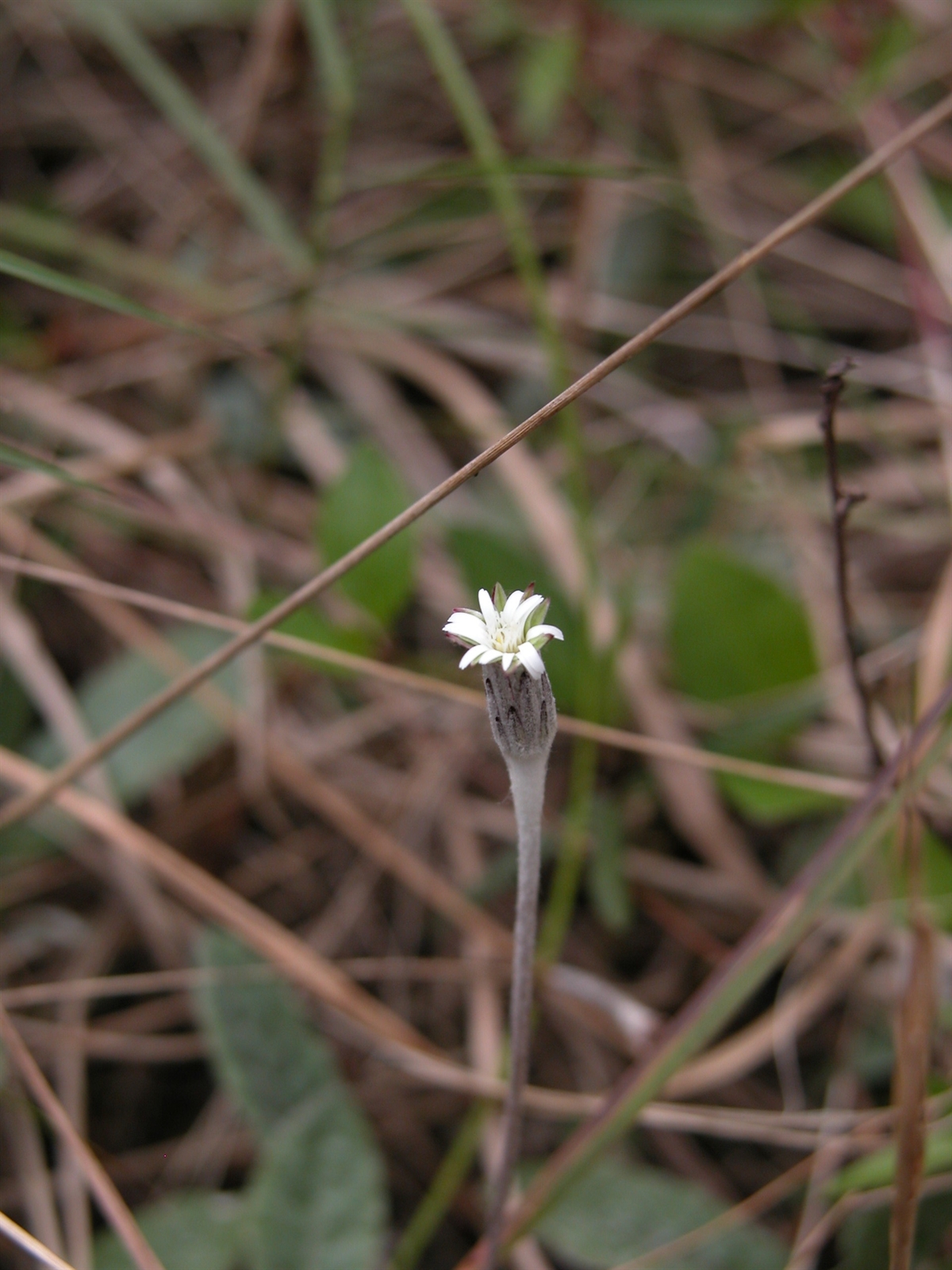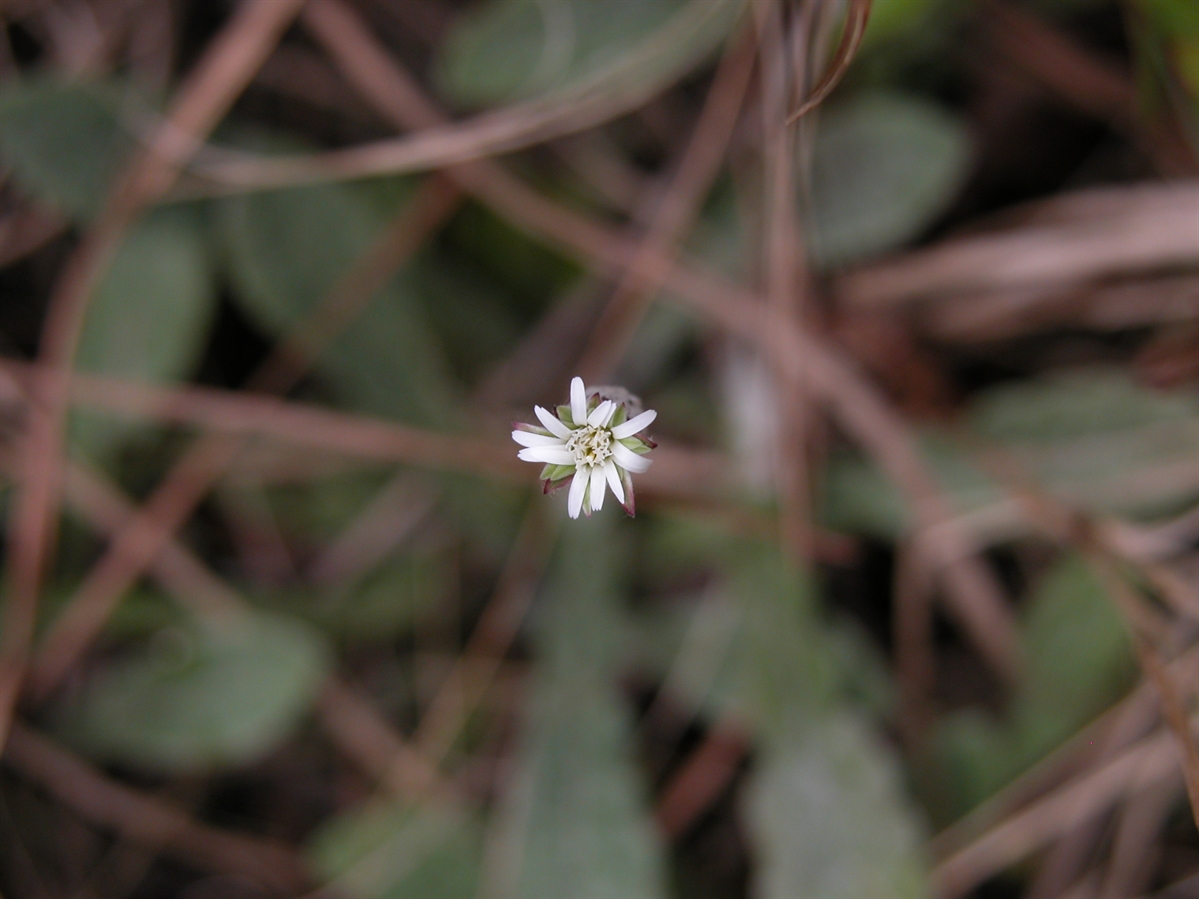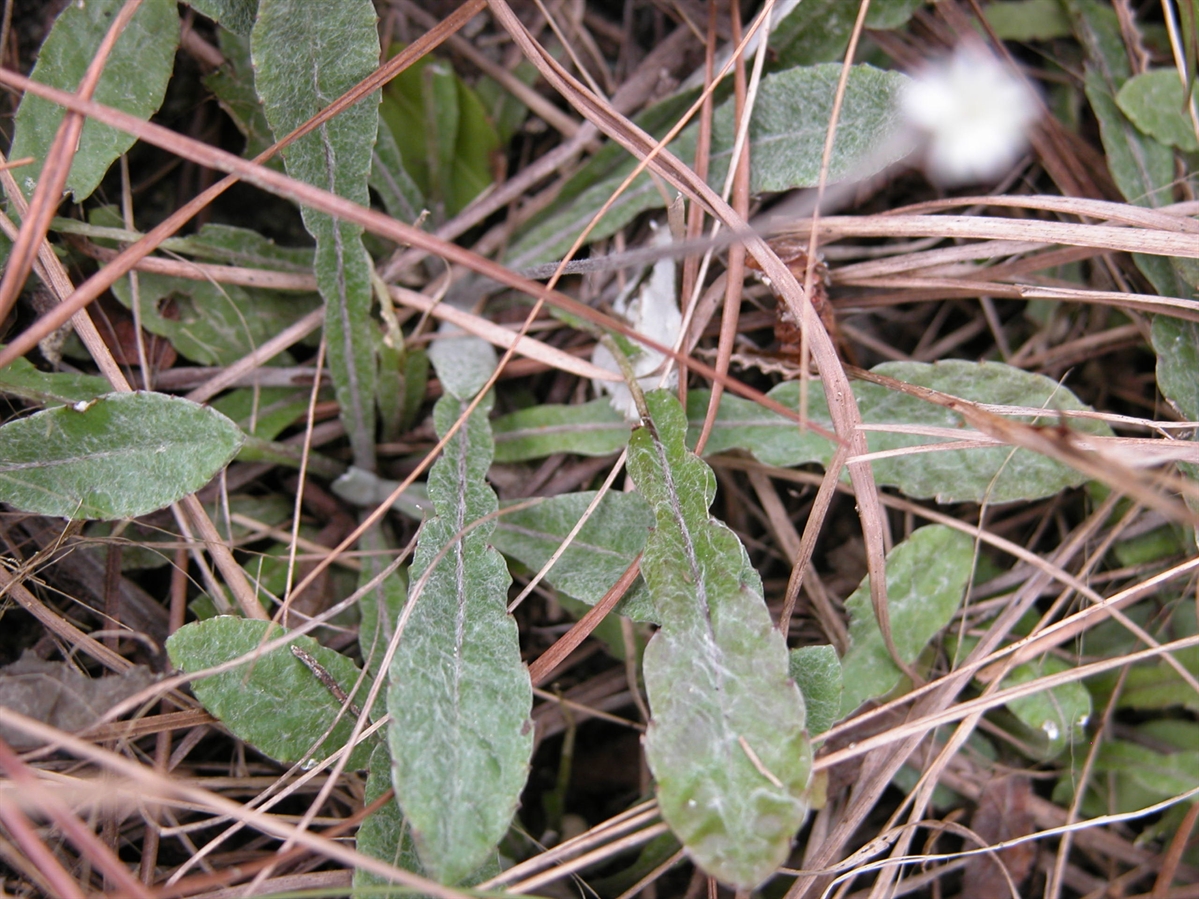Habit: Chaptalia dentata is a perennial herb up to 15 cm in height. Leaves arranged in a basal rosette, oblanceolate, to 20 cm in length and 2 cm at its widest point, abaxially with tufts of hairs throughout becoming glabrous with age, glabrous adaxially, a dentate leaf margin and an obtuse/acute leaf apex.
There are both perfect and imperfect (carpellate) flowers in the heads. The heads are subtended by a series of involucral bracts (phyllaries). The perfect (disc) flowers are in the center and the imperfect (ray) flowers are arranged around the edge of the heads. Each flower is subtended by a bract. The pubescent heads are individual on a scape. The calyx is modified as a ring of small projections (pappus).
The incomplete, imperfect zygomorphic flowers have 3 white green fused petals and no stamens. The complete, perfect, zygomorphic flowers have a corolla with 5 (appearing bilabiate) fused, white petals. There are 5 stamens fused at their base. In both types of flowers, the ovary is inferior with a single locule but only the imperfect flowers have functional ovules. The fruit is an achene at maturity that retains the modified calyx (pappus). The achene has an elongate beak topped with the pappus.
Habitat: Chaptalia dentata grows in Pine Woodlands and grasslands.
Distribution: Chaptalia dentata occurs throughout the northern islands of the Lucayan Archipelago, the Caribbean, and Florida.
Medicinal/Cultural/Economic usage: Chaptalia dentata is not known to be used medicinally in the Lucayan Archipelago.


